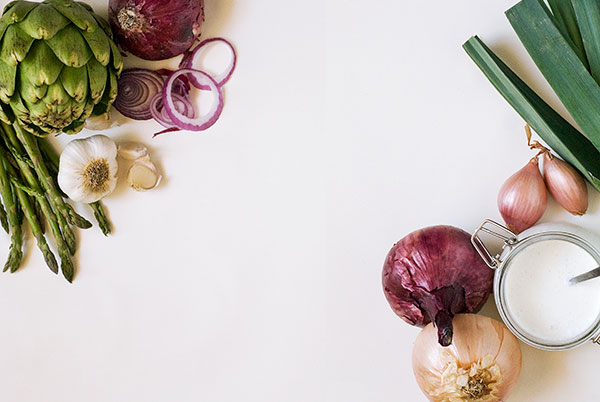
Understanding Probiotics & Prebiotics: The Complete Guide
The human gut contains a myriad of microorganisms which form a well-orchestrated ecosystem known as microbiota. Human microbiota plays a vital role in the human body by regulating immune and inflammatory responses, producing certain vitamins and biologically active substances, scavenging for non-digested food components and metabolites (for example, uric acid causing gout), and feeding the intestinal lining. Disturbances in the human microbiota can be caused by antibiotics, excessive carbohydrate consumption, prolonged use of birth control pills, immunosuppression, and anti-inflammatory drugs.
These disturbances can result in colon inflammation, yeast overgrowth, and leaky gut syndrome eventually triggering chronic fatigue, brain fog, insomnia, and headaches. Gluten intolerance and celiac disease cause profound changes in gut microbiota which persist for years and years even on the strictest gluten-free diet. Therefore, in addition to a gluten-free diet, the efficient healing of the gut requires the use of probiotics and prebiotics.
Probiotics are live microorganisms that improve intestinal microbial balance and suppress pathogenic microorganisms. They can be consumed in the form of food supplements or as a part of live fermented foods such as pickled vegetables, sauerkraut, live yogurt, buttermilk, kefir, kimchi, and gluten-free soy sauce.
Clinical and research data demonstrate that probiotics benefit people with chronic diarrhea and irritable bowel syndrome (IBS). Certain probiotic strains (Lactobacillus acidophilus, Lactobacillus casei, Lactococcus lactis) may help with the digestion of lactose, soy, and animal proteins (Lactobacillus plantarum). Probiotics (Lactobacillus salivarius, Bifidobacterium bifidus, Bifidobacterium lactis) can be used for the prevention of colon cancer and to lower cholesterol and blood pressure (Saccharomyces boulardii, Lactobacillus acidophilus, Lactobacillus casei). Another important aspect of probiotics
(Saccharomyces boulardii, Lactobacillus acidophilus) is their ability to eradicate Helicobacter pylori (a microorganism causing ulcers) and to reduce symptoms of antibiotic-associated diarrhea due to Clostridium difficile. Recently, a particular probiotic, Bacillus coagulans, was shown to possess strong anti-inflammatory activity and benefit people with rheumatoid arthritis and ulcerative colitis. Finally, probiotics (Lactobacillus rhamnosus) can be used to treat various skin diseases like eczema.
Selecting probiotics for individual use can be a tough process due to the broad variety of strains, strengths, and brands available in the market.
Commercially available probiotics come in the form of single strain or multiple strain preparations. For general purposes, it is preferred to use multiple strain products to imitate the diverse environment of the human gut.
The amount of consumed probiotics is counted in Colony Forming Units (CFUs). In general, if you take probiotics just for maintenance of intestinal health, you should take 20-25 billion CFUs a day. During antibiotic therapy, increase consumption to 100 billion CFUs a day. Treatment of chronic yeast (Candida) infection, leaky gut syndrome, and colitis quite often requires the daily dose of probiotics in the range of 100-500 billion CFUs a day.
The use of probiotics is not recommended in individuals with acute and chronic pancreatitis, in individuals undergoing stem cell and organ transplantation, or in individuals with a severely compromised immune system.
What are prebiotics and why are they important?
Prebiotics are non-digestible carbohydrate-based food ingredients that stimulate the growth of beneficial bacteria (bifidobacteria and lactic acid bacteria) in the gastrointestinal tract. In contrast to probiotics, prebiotics are not live microorganisms but rather heat-resistant fiber-like substances. The health effects of prebiotics are brought about by increased production of short-chain fatty acids by the stimulated bacteria, which feed normal gut microbiota and supply energy to the cells that form the intestinal lining.
Natural products rich in prebiotics include various vegetables such as asparagus, garlic, leeks, onion, and artichoke. Another valuable source of prebiotics is brewer’s yeast.
Prebiotics are classified into several groups: short-chain, long-chain, and full-spectrum prebiotics. Short-chain prebiotics are mainly fermented in the right-side of the colon, providing nourishment to the bacteria in that area. Longer-chain prebiotics are fermented more slowly, nourishing bacteria predominantly in the left-side of the colon. Full-spectrum prebiotics nourish bacteria throughout the entire colon.
Consumption of prebiotics not only normalizes intestinal gut microbiota but also aids in the absorption of calcium, magnesium, and vitamin D, stimulates mucosal immune responses, reduces inflammation, prevents colon cancer, and normalizes bowel movements.
My prebiotic of choice is mannan-oligosaccharides or MOS, a product derived from the cell wall of the brewer’s yeast, Saccharomyces cerevisiae. MOS stands alone in the company of other prebiotics because it is not only a “feeder” of good gut bacteria but is also one of the strongest stimulants of our immune system. Animal and human data show that MOS can restore the damaged intestinal lining (intestinal villi), stimulate digestive enzymes, and prevent certain intestinal infections.
The combination of probiotics and prebiotics is known as synbiotics. Commercially available synbiotics can be found in the form of prefixed mixtures. However, in our clinical practice we create the synbiotics effectively by individually administering pre- and probiotics, which provides us with better flexibility of therapeutic protocols.
Dr. Shikhman’s Helpful Tips
• Initial consumption of pre- and probiotics, especially at high doses and high CFUs, results in excessive gas formation, bloating, and abdominal discomfort. Be patient. These problems typically disappear in 3-4 days.
• In general, we recommend taking probiotics on an empty stomach. If you take probiotics at a dose equal to or above 100 billion CFUs, divide their consumption between AM and PM.
• You do not have to take pre- and probiotics together. Prebiotics can be taken with meals.Try to use non-refrigeratable probiotics, such as Bacillus coagulans, when you travel.
•Remember, probiotics are live microorganisms that can be killed by antibiotics. Therefore, if you take antibiotics, separate the consumption of probiotics from the antibiotics by at least 2 hours.




Pingback: Excellent Probiotic Gluten Unfastened – Gilbert blog's
Pingback: Vegan Garlic Herb Cheese Spread Recipe | Simply Gluten Free
Pingback: Focaccia with Grapes and Rosemary | Recipe